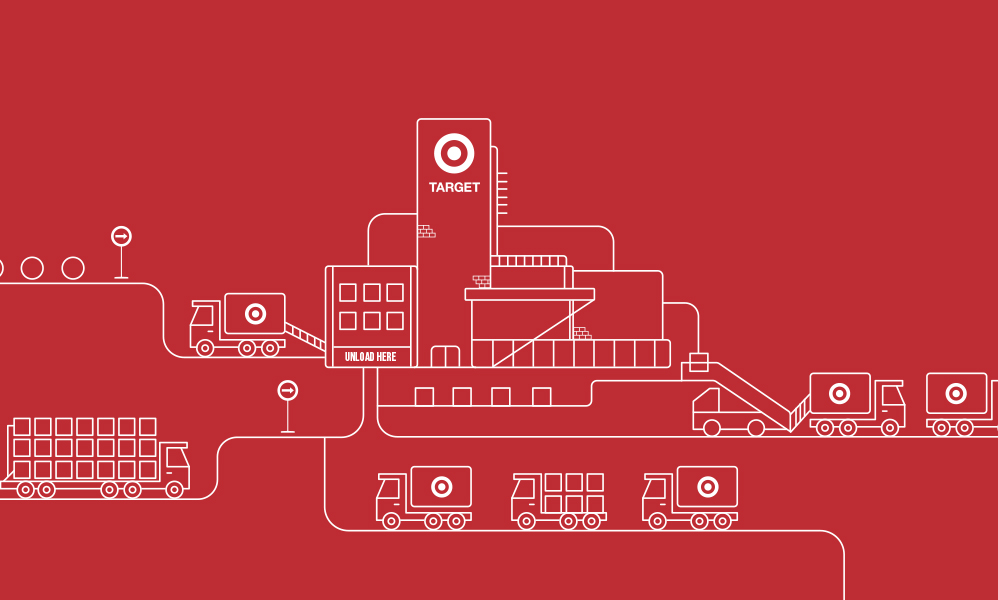Retailers like Target & Walmart are bringing generative AI into physical stores

As retailers invest in generative AI to upgrade their online shopping experiences, some of the biggest retailers are beginning to use similar features in physical stores — especially to give employees an extra boost.
Retailers have been quickly adopting generative AI, popularized by ChatGPT in November 2022, to provide more personalized search tools and virtual assistants online and to generate marketing content, among other uses. Now, Target, Walmart and Best Buy as well as smaller retailers such as Boot Barn and Tractor Supply Co. have announced plans to launch AI-powered tools to enhance the store experience.
Target is the latest major retail player to join in, announcing an AI tool called Store Companion on June 20. The company is piloting the feature at about 400 stores and plans to roll it out to all of its almost 2,000 stores by August. Walmart, meanwhile, is using internal AI tools to scan produce, determine how ripe the product is and show what to do with it in a dashboard through generative AI, CNBC reported in April. Best Buy announced plans that same month to develop a generative AI assistant to help employees access company resources and product guides.
These programs showcase the various ways retailers are trying to implement AI into their businesses. Generative AI is a popular buzzword in every business right now, but the best way to put the technology into practice is yet to be determined. Duleep Rodrigo, U.S. sector leader for consumer and retail at KPMG, said retailers are still figuring out which use cases work best with customers and, importantly, which of them drive the most productivity gains, growth or savings.
“We still need to get to more maturity, scalability and industrialization of these solutions,” Rodrigo said. “We are probably not at that place today where we can pinpoint and say, these two or three use cases have been tried out across hundreds of different retailers and they’ve all landed.”
Target’s tool “frees up time and attention for our team to serve guests with care and to create a shopping destination that invites discovery, ease and moments of everyday joy,” Mark Schindele, the company’s chief stores officer, said in a statement.
The virtual assistant, available as an app on team members’ devices, will answer questions, coach new and seasonal team members and support store operations management.
The company said the companion is meant to speed up service and deepen guest engagement, answering questions about signing up for a Target Circle Card or restarting the cash register in an outage, for example.
Experimenting with and navigating AI
Retailers are still in the early experimentation stages, with each trying out different approaches to generative AI in their stores that range from operations to customer service and educating staff.
Most of the uses are derivative of things retailers were already doing, just making them a little better and a little easier, said Jason Goldberg, chief commerce strategy officer at Publicis Groupe.
Launching these tools also has its challenges, a clear one being that stores are built for physical, not digital, experiences. That could make it more difficult to get customers to adopt any digital solutions in stores.
“We mostly have discouraged customers from looking down at their phone while they’re shopping,” Goldberg said. “Digital doesn’t have great reach in a store like it has at home.”
Still, retailers are clearly interested. A Salesforce and Retail AI Council survey of retailers in multiple countries found 20% of retailers have rolled out generative AI technology, with most others at least exploring it if not beginning implementation. Just over 80% of retailers have an AI budget, the survey found, with the top functions for generative AI being customer service, marketing and store operations.
Making the store more personal
Despite the hurdles, Goldberg still sees plenty of potential in the use of AI by retailers and imagines a world where the technology could automate the entire shopping process.
“AI is helping us get back to personalized experiences at scale,” he said, recalling what it would have been like to visit a merchant who personally knew everyone who walked through their store hundreds of years ago. “That’s a big deal.”
Rob Garf, vp and general manager of retail and consumer goods for Salesforce, said generative AI tools can help also remove employees from the checkout process — a game of speed and efficiency — and have them focus on customers who are still browsing and exploring.
“The largest potential [of generative AI in retail] is empowering the store associate,” he said.
Experimentation, however, comes with its own pitfalls. As retailers experiment with the best way use cases for generative AI, it’s likely that some of these tools will eventually be pared back or cut altogether. Amazon, for example, spent years experimenting with Just Walk Out technology to eliminate checkouts but has since decided to stop using the technology in grocery settings. In new stores, Amazon will instead use smart shopping carts.
“It is a conversation that is part of every board room at this point,” Garf said. “Whether the conversation is focused initially on AI or not, it becomes the topic of conversation.”

